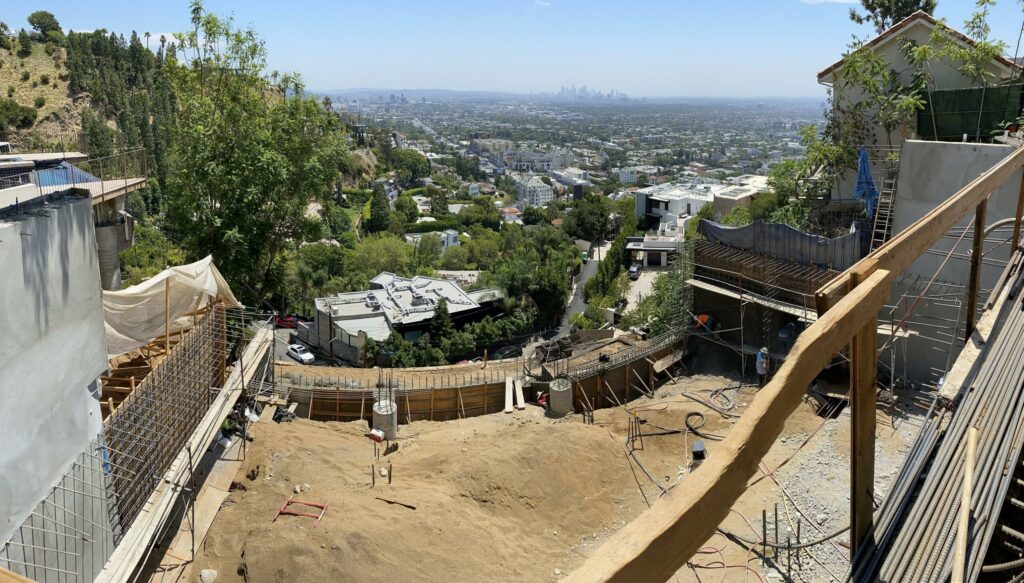
Shoring is a foundational part of below-grade construction — not just for safety, but for keeping timelines and budgets under control. Especially in tight, complex sites across Los Angeles, Malibu, and Pacific Palisades, well-planned shoring ensures smooth excavation, protects neighboring properties, and supports structural integrity from day one.
Smart Shoring Starts with Data
-
-
Soil Analysis First
A geotechnical report is the baseline for all design. It tells you how much pressure the soil can handle, how deep water might be, and what system is safe to use. -
Choose the Right System for the Site
Soldier Piles & Lagging: Ideal for urban sites with vertical cuts.
Shotcrete & Tiebacks: Great for hillside digs like Bel Air or Pacific Palisades.Secant or Tangent Piles: Best for deep excavations or areas with groundwater risk.Integration Is Everything
-
-
-
Coordinate with Waterproofing Early
Shoring and waterproofing often meet at critical seams — penetrations, edges, terminations. If they’re not aligned, leaks and delays follow. -
Allow Time for Permits and Plan Check
Shoring designs often require LADBS approval. Start the process early to avoid bottlenecks. -
Plan for Access and Equipment
Some shoring systems need large rigs or cranes. On hillside or narrow sites, this requires advanced planning or alternate methods.Avoid Delays with Proactive Planning
-
Field changes are costly.
-
City inspections can stall excavation.
-
Misaligned systems create scope conflicts.
Working with a contractor who understands both the engineering and the logistics helps minimize rework and downtime.
-
-
Final Thoughts
At IHC Group, we help clients avoid setbacks by planning every phase — from soil testing and design to field coordination and integration. If you’re building in a sensitive or high-profile zone in Los Angeles, Malibu, or Pacific Palisades, the right shoring strategy protects more than just your foundation — it protects your project timeline, budget, and reputation.
At IHC Group, we bring experience in both shoring design support and integration with below-grade systems. We help you avoid the pitfalls and keep your project on track. Call (818) 540-5235
Explore more at our websites:
